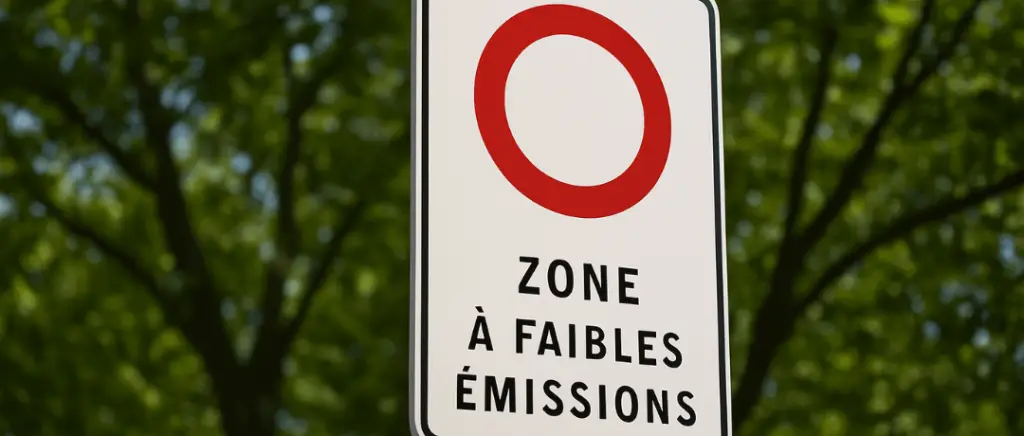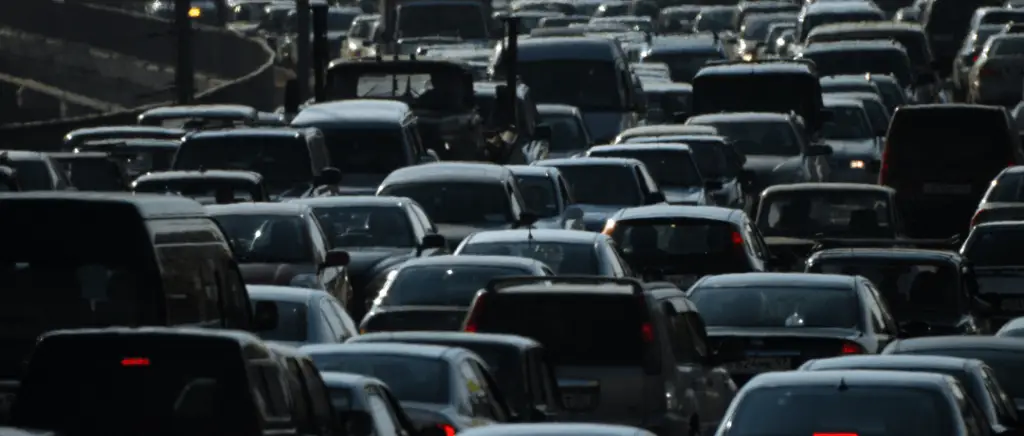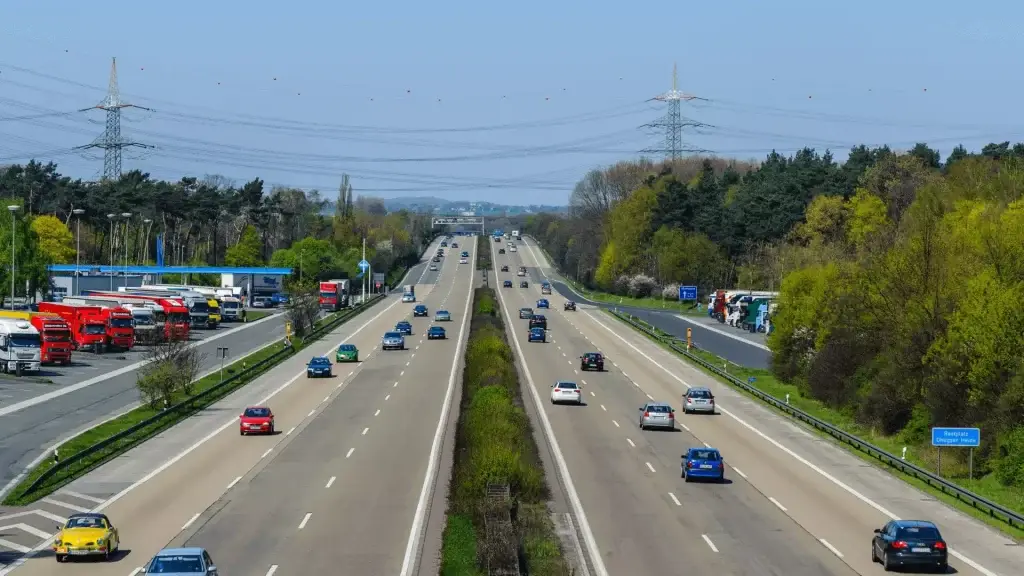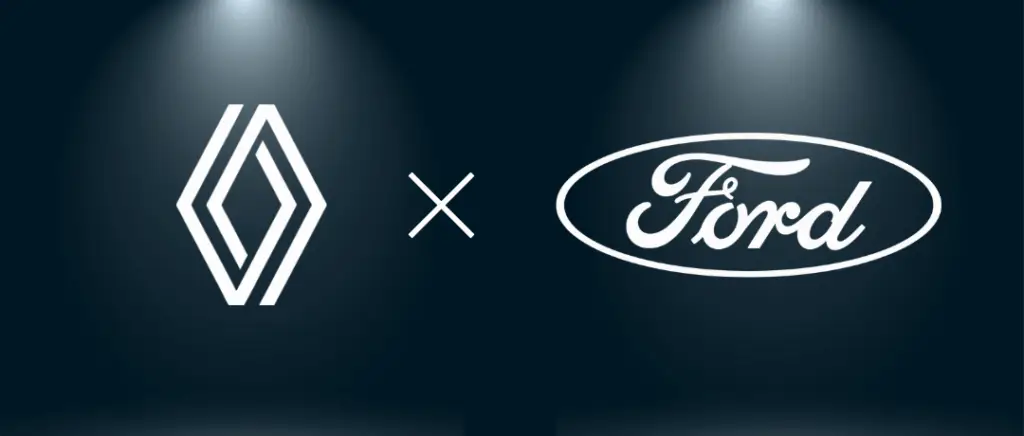EPZ: what exactly are we talking about?
A response to climate and health issues
Low Emission Mobility Zones (ZFE-m) are an innovative a key tool in the fight against air pollutionThis is a major problem in France and Europe. The concept is based on a simple but ambitious idea: limit the circulation of the most polluting vehicles in certain urban areas to improve air quality and protect public health. Introduced by the 2021 Climate and Resilience Act, these zones concern conurbations with more than 150,000 inhabitants where regulatory pollution thresholds are regularly exceeded.
According to Santé Publique France, the air pollution is responsible for 40,000 premature deaths every year in France. Fine particles (PM10, PM2.5) and nitrogen dioxide (NO₂), mainly emitted by road traffic, are the cause of serious respiratory diseases, d'cardiovascular events and even cancers.
Visit Île-de-FranceFor example, it is estimated that reducing these pollutants could prevent almost 5,000 premature deaths every year. The purpose of the EPZs is therefore to reduce these emissions by gradually banning the oldest, most polluting vehicles, using the Crit'Air sticker system.
In addition to the impact on health, the EPZs play a key role in the fight against climate change. By reducing CO₂ emissions from road traffic, they contribute to achieve the European objectives set by Directive 2008/50/EC on air quality. For example, in the Île-de-France region, the introduction of an EPZ has resulted in a 5 % reduction in CO₂ emissions from road transport as soon as it is set up.
With more than 320 similar zones deployed in European cities such as London or BerlinEPZs are not unique to France. Their effectiveness has been proven, with lower concentrations of pollutants in the air and a significant improvement in the health of residents. In France, 42 agglomerations have been concerned by the introduction of an EPZ since 1 January 2025.
See also our article :
How the EPZs work: criteria, vehicles concerned, target cities
As briefly stated above, the operation of the EPZs is based on a well-defined mechanism: the classification of private vehicles through the Crit'Air sticker. This enables classify cars according to their level of pollutant emissionsbased on their engine type (petrol or diesel) and date of first registration.
The cars are divided into 6 categoriesof Crit'Air 0 (100 % electric or hydrogen-powered vehicles, therefore non-polluting) to Crit'Air 5 (the oldest diesels). This system makes it easier to identify the most polluting vehicles and allows local authorities to set targeted traffic restrictions in the areas concerned.
See also our article :
Before 1 January 2025, most of the EPZs primarily targeted Crit'Air 4 and 5 vehicles and those not classified as suchwhich are considered to be the most polluting. Since then, the rules have become stricter in many conurbations. From now on Crit'Air 3 vehicles are also in the spotlight:
- Diesel registered between 2006 and 2010
- Petrol registered between 1997 and 2005
💡Did you know ? Vehicles with a Crit'air 3 sticker represent around 14.3 million units, or 41% of the national car fleet.
| Crit'Air sticker | Type of vehicle | Date of registration |
|---|---|---|
| Crit'Air 0 (green) | 100 % electric or hydrogen vehicles | All |
| Crit'Air 1 (purple) | Plug-in hybrids and petrol | From 2011 |
| Crit'Air 2 (yellow) | Petrol (2006-2010), Diesel (from 2011) | 2006 to 2010 (petrol), 2011+ (diesel) |
| Crit'Air 3 (orange) | Petrol (1997-2005), Diesel (2006-2010) | 1997 to 2005 (petrol), 2006 to 2010 (diesel) |
| Crit'Air 4 (Bordeaux) | Diesel (2001-2005) | 2001 à 2005 |
| Crit'Air 5 (grey) | Diesel (1997-2000) | 1997 à 2000 |
| Uncategorized | Petrol or diesel registered before 1997 | Before 1997 |
💡Important to know : To avoid penalising users with special needs, certain exemptions have been made, in particular :
- The emergency vehicles (ambulances, fire brigade, etc.)
- The people with disabilities holders of a mobility and inclusion card
- The "small rider" exemption 52 days of authorised traffic per year for vehicles that are normally prohibited
- Professionals faced with delivery times or for essential one-off uses
To give you a more detailed overview of the cities concerned in 2025, here is a summary table:
| ZFE en vigueur | ZFE À VENIR |
|---|---|
|
Rouen
|
Dunkerque
|
|
Paris and the Greater Paris region
|
Lille
|
|
Reims
|
Béthune
|
|
Strasbourg
|
Douai-Lens
|
|
Lyon
|
Valenciennes
|
|
Grenoble
|
Amiens
|
|
Saint Etienne
|
Metz
|
|
Nice
|
Nancy
|
|
Aix-Marseille
|
Mulhouse
|
|
Clermont-Ferrand
|
Dijon
|
|
Montpellier
|
Annemasse
|
|
Toulouse
|
Annecy
|
|
|
Chambéry
|
|
|
Toulon
|
|
|
Avignon
|
|
|
Nîmes
|
|
|
Perpignan
|
|
|
Pau
|
|
|
Bayonne
|
|
|
Bordeaux
|
|
|
Limoges
|
|
|
Orléans
|
|
|
Towers
|
|
|
Angers
|
|
|
Nantes
|
|
|
Le Mans
|
|
|
Brest
|
|
|
Rennes
|
|
|
Caen
|
|
|
Le Havre
|
The financial consequences of abolishing the EPZs
Loss of European subsidies and possible reimbursements
The abolition of the EPZs, voted through parliamentary committee on 26 March 2025, could have colossal financial repercussions for France. According to a note from the French Treasury, this decision puts over €3 billion in European aid at risk under the National Recovery and Resilience Plan (NRRP), a plan developed in response to the health crisis and partly funded by the EU.
This political U-turn follows the vote of the special committee responsible for examining the administrative simplification billThe European Parliament approved a number of amendments aimed at abolishing the EPZs (by 26 votes to 11, with 9 abstentions). These proposals, submitted by Les Républicains and Rassemblement national MPswere adopted with the support of members of other parliamentary groups, against the advice of the government.
As such, the EPZs are criticised by some elected representatives who feel that they unfairly penalise low-income householdsThese are often older vehicles that have to be kept.
However, the EPZs are part of the contractual commitments made by France to the European Union in order to benefit from NRRP subsidiescalled "milestones" and "objectives".
This aid, intended to financing the ecological and energy transitionThese are subject to compliance with specific conditions, in particular the introduction of policies to promote sustainable mobility and improve air quality.
By abolishing the EPZs, the France would call these commitments into question. The European Commission could then consider this decision as a breach of contractual agreementsThis will result in a freeze on future payments and a possible demand for repayment of funds already received.
The Treasury's note is clear: the financial consequences could exceed €3 billion. In detail:
- Next aid instalments frozen 3.3 billion for 2025 (following the extension of the EPZs that same year) and up to €6.1 billion for 2026 could be blocked.
- Possible refund France could have to return up to €1 billion already paid out under PNR.
It is in the interests of the French authorities to retain the provisions on EPZs.
Note from the French Treasury
These losses would not be limited to the financial aspect. They could also damage France's credibility with the European institutionsThis could jeopardise its ability to negotiate or obtain future financing.
The abolition of the EPZs also sends a unfavourable message to Brussels. The Ministry of Ecological Transition has warned of the political risks associated with this decisionThis could be seen as a step backwards in our efforts to combat climate change. This signal could weaken relations between France and its European partners in a context where unity is essential to achieving common environmental objectives.
Impact on public and private financing and on logistics and transport professionals
For professionals, particularly those in the logistics and transport sector, the EPZs have entailed a costly but necessary adjustment. Many companies have invested in the renewal of their fleets to comply with Crit'Air standards.
For example, in the Greater Paris metropolitan area, 17 % des light commercial vehicles are classified Crit'Air 3 or higherThis represents around 50,000 vehicles that need to be gradually replaced.
As a reminder, France could lose up to 3 billion euros European aid to finance the ecological transition. This loss would directly affect local authorities and public infrastructureBut it is also the companies that depend on this funding to develop sustainable solutions.
But the repercussions don't stop there: the negative signal sent to private investors could put the brakes on the development of clean technologies, such as electric or hydrogen-powered vehicles. Innovative companies could be reluctant to invest in a market where environmental regulations are becoming unstable.
What's more, certain sectors would be particularly affected by this abolition:
- Transport and logistics With 27 % of vehicles classified Crit'Air 3 or more in this sector, the abandonment of the EPZs could worsen dependence on polluting technologies.
- Renewable energy industries : The abolition could slow demand for environmentally-friendly solutions such as charging points and electric vehicles.
- Local authorities The European Commission: Deprived of part of their European funding, they could be forced to scale back their sustainable infrastructure projects.
Conclusion
While the Abolition of EPZs divides public opinion and drives parliamentary debateBut one thing is clear: the stakes go far beyond simply regulating car traffic. This political choice, if confirmed, could cost more than 3 billion euros to FranceThis will compromise its European credibility, weaken local authorities and destabilise thousands of economic players already committed to the ecological transition.
For professionals, particularly in the transport, logistics and green innovation sectors, it's a real opportunity. new regulatory uncertainty weighing on investmentIt is also a question of strategic choices and decarbonisation trajectories. At a time when climate issues demand coherence, visibility and support, abruptly abandoning the EPZs would appear to be a high-risk step backwards.
But in the face of this instability, one opportunity remains: that of take the leads, of surround yourself with the right partners and building a sustainable mobility strategy that is cost-effective, compliant with regulations and good for your company's image.
At BeevWe understand how regulatory changes can impact your business. That's why we offer a tailor-made support to help you make the switch to electric mobilitytaking into account your business needs, logistical constraints and available financing opportunities.
Monday to Friday
9am - 12.30pm - 2pm - 7pm


































